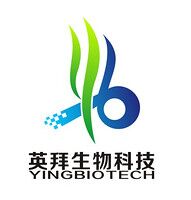細胞譜系鑒定ChIP PCR 芯片 Cell Lineage Identification ChIP PCR Array

細胞譜系鑒定ChIP PCR 芯片 Cell Lineage Identification ChIP PCR Array
Cell Lineage Identification ChIP PCR Array
運費 ¥0.00
| 地區: | 上海 |
| 簡介: | Cell Lineage Identification ChIP PCR Array |
| 提供商: | SAB |
| 服務名稱: | Cell Lineage Identification ChIP PCR Array |
Germ Layers: Ectoderm: FGF5, FOXD3, OTX2, ZIC1. Neuroectoderm: GBX2, NEUROG2. Mesoderm: BMP4, CD34, DCN, GATA2, HAND1, IGF2, MIXL1, PDGFRA, RUNX1 (AML1), T (Brachyury). Endoderm: FOXA1, GATA1, GATA6, HNF4A, SOX17, SOX7. Progenitors: Ectoderm: Neuronal: FABP7, HES5, PROM1, SOX2. Immature Neuron: DCX. Immature GABA Neuron: GAD2, SLC32A1. Limbal Progenitor: ENO1, MSLN. Motor Neuron Progenitor: FOXG1, OLIG2. Oligodendrocyte Progenitor: NKX2-2, OLIG2. Mesoderm: Early Cardiomyocyte: HAND2. Early B Cell: CD79A. Early T Cell: CD3E, PTCRA. Muscle Stem Cell: CD34. Endoderm: Pancreatic Islet Cell: KRT19. Hepatic Stem Cell: APOH, DPP4, MAP3K12. Terminal Differentiation: Ectoderm: Keratinocyte: KRT10, KRT14. Melanocyte: TYR. Mature Neuron: NEUROD1. Cholinergic Neuron: CHAT. GABA Neuron: GAD1. Glutamatergic Neuron: SLC17A6, SLC17A7. Astrocyte: GALC, GFAP. Ganglion Cell: POU4F2. Photoreceptor Cell: RCVRN. Mesoderm: Skeletal Muscle Cell: MYH1. Smooth Muscle Cell: MYH11, SMTN. Cardiomyocyte: MYL3, MYH7, NPPA, RYR2. Osteoblast: IBSP. Osteoclast: CTSK. Chondrocyte: COL10A1, COMP. Macrophage: CCR5. Endoderm Hepatocyte: ALB, G6PC, TAT. Cholangiocyte: ITGB4. Beta Cell: INS, SLC2A2. Exocrine Cell: CPA1. Lung Cell: SFTPB, SFTPD. Proximal Tubule Cell: AQP1, MIOX. |








